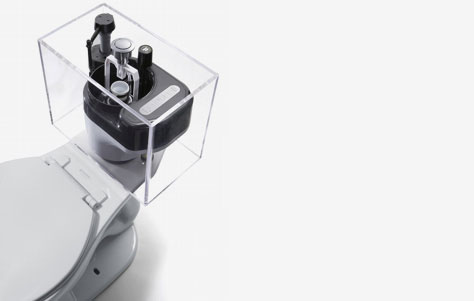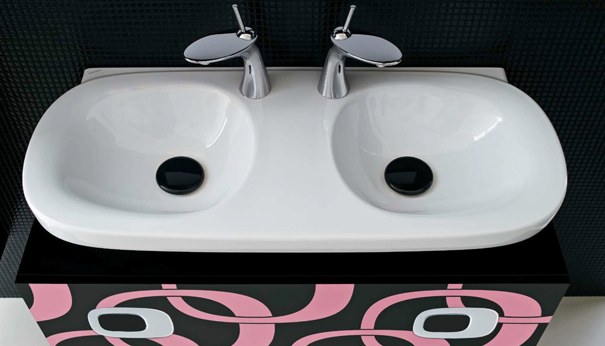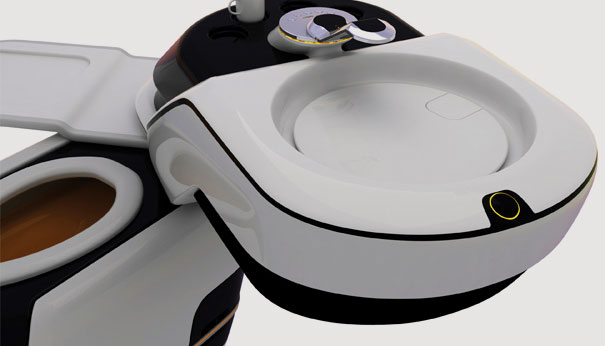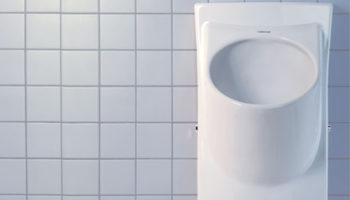The Stealth Toilet by Niagara Conservation
When I think of toilets, stealth isn’t exactly the first word that comes to mind. In fact, stealth isn’t in the first 1,000 words that come to mind, which makes Niagara Conservation’s new Stealth Toilet all the more intriguing. The Stealth Toilet, featured as one of Building Green’s top 10 products for 2010, gets its name from the vacuum-assist mechanism which remedies the traditionally loud flush caused by a pressure-assist toilet, while using a modest 0.8gpf.
The Stealth Toilet. Designed by Niagara Conservation.
For a bit of background, the standard residential toilet uses a gravity flush system which is quiet but uses a lot of water – up to 3.4 gallons per flush or more. Government mandates have reduced the allowable water use to around 1.6 gallons per flush. High efficiency toilets which are often of the pressure-assist variety use around 1.2 gpf or less. If we relate that back to a daily measurement, think about dumping over a gallon of milk down the toilet every time you need to use the loo.
With the Stealth vacuum-assist system, there is a special inner chamber that sits inside the traditional-looking toilet tank. Pressure created by a special transfer tube produces an air bubble which raises the water level in the toilet without increases the amount of water used. When the toilet is flushed, water exiting the inner chamber creates a vacuum and subsequent pressure imbalance which sucks the water away from the toilet bowl and into a trapway. The Stealth system is both quieter than a pressure-assist system and faster than the traditional gravity system.


The downside to using less water is the reduction in the distance the waste can travel horizontally, about 20 feet before reaching a vertical waste line. For the moment, this limits the usability of the Stealth in commercial applications, but the inventive nature of Niagara Conservation leaves hope for further development and improvement of their design. The Stealth Toilet is priced at about $300, leaving no excuse for purchasing a water hogging toilet in your future remodel.
via BuildingGreen




Leave a Reply